Peripheral facial nerve palsy is a common medical condition in children, especially those in high-risk groups with weak health. This condition significantly affects the child’s health and quality of life. Parents’ knowledge of proper home care and exercises for their children can contribute to accelerating the recovery process, increasing the chances of complete recovery, and reducing secondary complications of the disease.
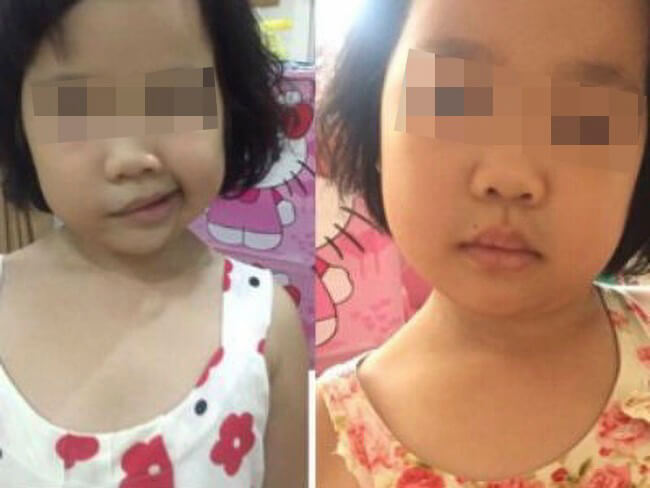
Facial nerve palsy, commonly known as “facial paralysis” or “crooked mouth,” is a condition characterized by partial or complete loss of motor function in the facial area, often affecting one side, resulting in facial deformity. This condition affects the child’s daily activities such as learning, playing, and communication, makes it difficult to express emotions on the face, causes difficulty in eating, and importantly, may leave lasting aesthetic effects on the child as they grow older. Additionally, the disease may lead to secondary injuries to the eyes, dental and facial structures, ear-nose-throat problems, and facial muscle contractures.
In treatment, besides medical interventions, parents’ self-care, massage, and exercises for the child at home, along with appropriate nutrition and lifestyle, play a crucial role in the child’s recovery to normal facial function. Parental massage or self-massage by older children with high frequency during the day has been shown to increase treatment effectiveness, reduce recovery time, enhance complete recovery, and decrease secondary complications.
However, parents and caregivers often worry and are unsure about the best methods of massage, exercises, and care.
Here is a detailed guide provided by doctors from the Vietnam National Children’s Hospital on how to perform simple exercises and massages for children at home, along with dietary and lifestyle recommendations to support the child’s recovery process.
1. Facial Massage (facial area) Home massage consists of 5 steps:
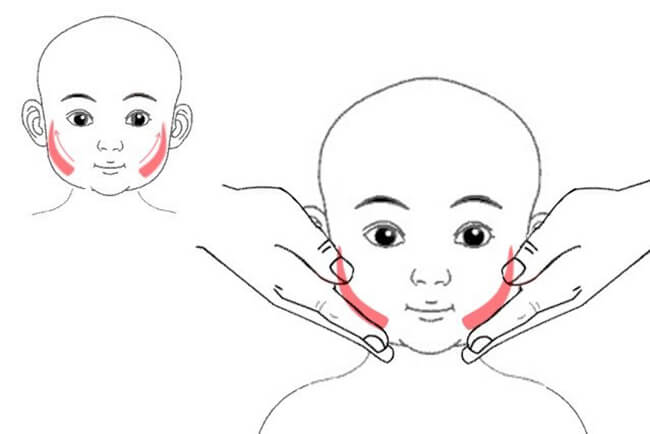
Step 1: Use the palm to stroke the skin from bottom to top, starting from the chin to the cheeks, up to the temples, and from the eyebrows to the hairline on both sides of the face. Repeat the motion 5-7 times. For the affected side, repeat an additional 3 times.
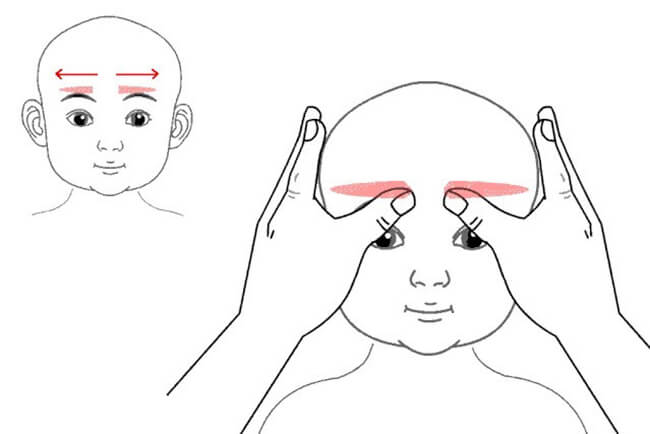
Step 2: Use the index finger to place it on the midpoint of both eyebrows, stroke from the middle of the forehead to both sides along the upper brow line. Repeat the motion 5-7 times. For the affected side, repeat an additional 3 times.
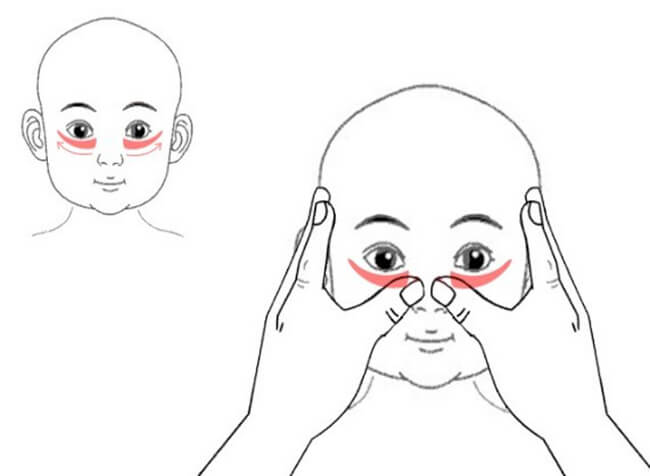
Step 3: Use the index finger to stroke along the lower eye socket (from top to bottom, outward, and upward). Repeat the motion 5-7 times. For the affected side, repeat an additional 3 times.
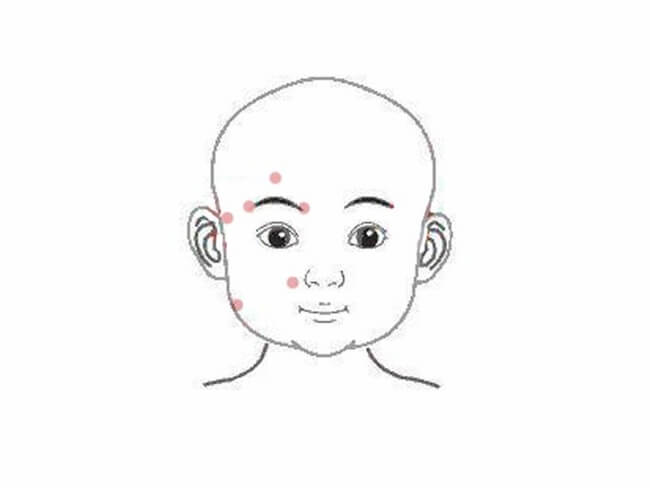
Step 4: Use one finger to massage the facial muscles on the affected side: outside the nostril, corner of the mouth, inner eyebrow arch, outer eyebrow arch, and forehead (midpoint between the eyebrows measured 1-2cm). Each position for 60-100 repetitions.
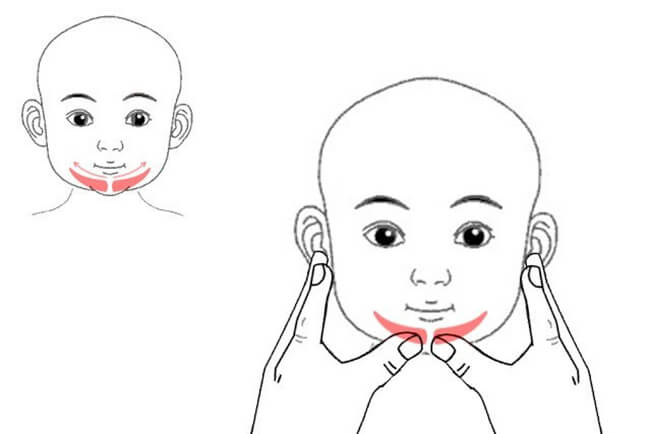
Step 5: Use the finger placed between the chin, stroke to both sides in a slightly upward direction. Repeat the motion 5-7 times. For the affected side, repeat an additional 3 times.
Massage each time for 10-15 minutes, repeat 1-2 times/day, continuously every day until recovery.
2. Exercises
– Actively exercise facial muscles (raise eyebrows, open mouth wide, close eyes tightly).
– Hold lips together for 5 seconds.
– Press lips together and move this part of the lips from one side to the other. Do not move the tongue. Repeat 10 times.
– Tighten lips and say “m…m…m”, then say “p…p…p”, then say “b…b…b”.
– Start by widening the mouth and hiding the teeth under the lips. Tighten the lips to form an “O” shape. Repeat 5 times.
– Practice saying the letters A, I:
- Letter A: Open the mouth as wide as possible, pronounce “A” for an extended period, and you can use one finger to gently push the facial muscles in the affected jaw corner upward to match the healthy side. Repeat 5 times.
- Letter I: Bite down on the back teeth, stretch the corners of the mouth to both sides, pronounce “I” for an extended period, and you can use one finger to gently push the facial muscles in the affected jaw corner toward the ear. Repeat 5 times.
Continuous training every day until recovery. Can be repeated 2-3 times a day.
3. Prevention and Care
- Avoid wind and cold: Keep the child warm, avoid cold winds when outdoors, avoid direct sunlight on the face, wash or care for the face with warm water.
- Eye care and protection: Children need to wear glasses to avoid dust when outdoors, use artificial tears, physiological saline to avoid dry eyes, and limit bacterial infections.
- Oral hygiene: The facial area cannot retain water in the mouth, food residue on the affected side can easily cause inflammation in the gum, mouth, and throat. Therefore, children need to brush their teeth twice a day, use dental floss, mouthwash, gargle, and nasal irrigation with physiological saline.
- A diet rich in nutrients to boost immunity: A diet rich in vitamins, minerals, carbohydrates, proteins, and fats, tailored to age. Avoid raw cold foods (ice cream, cold water, watermelon, shrimp, crab, fish salad…) Limit spicy hot foods, oily foods (chili, pepper, fried dishes…).
PhD. Dr. Nguyen Hong Minh, Master Luu Van Nam, Ns. Pham Thi Hang
Department of Traditional Medicine – National Children’s Hospital


